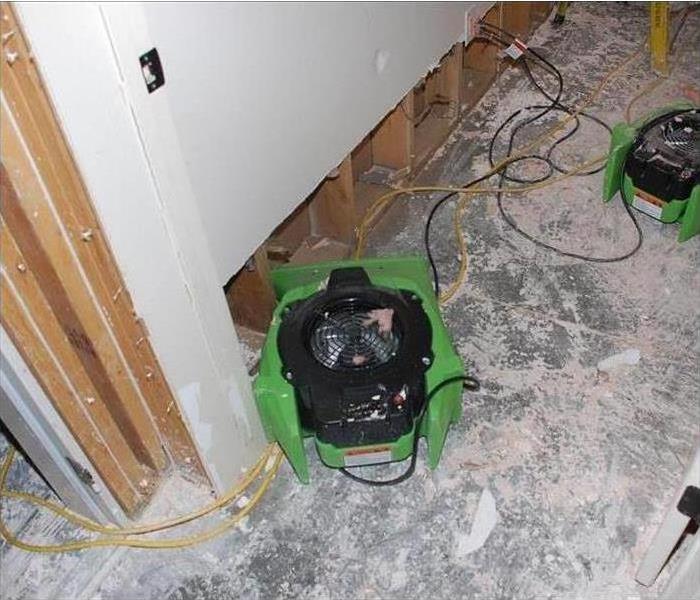Why Flood Cuts Are Made During Restoration
5/1/2022 (Permalink)
 A flood cut is a way to tear out damaged materials, provide access behind walls for repairs and increase airflow.
A flood cut is a way to tear out damaged materials, provide access behind walls for repairs and increase airflow.
Why Are Flood Cuts Made During Restoration?
Flood cuts serve several important functions inside a commercial structure that has recently been flooded. Restoration professionals may recommend cutting into drywall 12 to 18 inches above the flood line to identify and remove contaminated building materials and promote drying prior to restoration. Find out more about why storm damage cleanup experts may make cuts after flooding at a building in Louisville, CO.
Remove Contaminated Materials
Flood cuts make it easier for restoration professionals to check the condition of several materials in walls. The following substances may need to be torn out and replaced:
- Drywall
- Insulation
- Structural components
A flood cut is a way to tear out damaged materials, provide access behind walls for repairs and increase airflow. This measure is most important when damage that involves contaminated water has occurred.
Speed Up Drying Behind Walls
Flood cuts open up the walls of commercial buildings that have recently been exposed to flooding. If water has saturated drywall or worked its way behind walls in other ways, it can be difficult to promote fast drying without making significant cuts. If the water involved in damage is not contaminated, it may be possible to save walls by drilling small holes behind the baseboard and inserting hoses to circulate air behind walls.
Clear the Way for Rebuilding
Removing damaged drywall and wet insulation lays the groundwork for rebuilding. Once a structure has been cleaned and disinfected to get rid of sources of contamination and then dried thoroughly, the restoration process is ready to proceed.
Commercial building owners and managers who are not sure whether to make flood cuts should seek the expert opinion of damage restoration professionals who specialize in flooding. These specialists can determine the right height for a flood cut to check conditions behind walls, tear out contaminated building materials and speed up drying at a commercial property located in Louisville, CO






 24/7 Emergency Service
24/7 Emergency Service